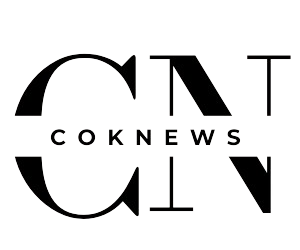Key Takeaways
- Encrypt HR documents to safeguard employee data from unauthorized access.
- Conduct regular audits and provide training to foster a culture of data security awareness.
- Store physical HR documents securely in locked cabinets and shred obsolete records to ensure confidentiality.
- Use strong, regularly updated passwords and two-factor authentication to protect digital HR files.
At present, one of the critical concepts in the digital world is to protect confidential Human Resources documents that include sensitive information related to employees such as personal information, salary records, performance reviews, and much more such information that may act as threats to unauthorized access or cyberattacks. Severe breaches of HR documents may result in identity theft or legal liabilities and may ultimately end in a loss of trust in the company. Understanding the risks and innovating the appropriate security measures is what will help a business protect its confidential HR data and ensure that its employee’s private information is safe.
Implementing Role-Based Access Control (RBAC)

Here is how you can execute RBAC:
Authorized Access
Authorized access is a critical component of handling confidential Human Resources files. Instructions must be clear on who can make changes and who has the authority to circulate the file. This will include establishing user roles that have specific access tailored to respective roles. Access rights should be periodically reviewed and updated so that when, say, the employee moves departments or leaves the organization, such access is withdrawn.
Audit Trails to Audit Access
An essential element to the implementation of RBAC is the provision of audit trails, that are used to track users’ actions taken on HR documents. The audit trail logs detail who accessed, modified, and disseminated a file, including when these incidents occurred. Regular audits of audit files disclose illegal access, thus complying with legal data security standards and establishing a culture of accountability and security.
The File Encryption

Scroll down to learn the importance of encrypting files
Why HR Documents Should be Encrypted
Encrypting HR documents protects employee data by encoding readable text into unreadable forms that only a decryption key could provide access to. Thus, if unauthorized people intercept the files, the information cannot be retrieved since it is encrypted. This therefore addresses issues of data protection regulations but promotes trust because you care for privacy.
File/Email Encryption Tools
Numerous powerful tools can be used to encrypt sensitive Human Resource files and emails. Solutions offer high local device protection because they allow access only to the users authorized for it. Email services like Proton Mail and encryption options in applications like Microsoft Outlook ensure safe communication of confidential information through AES encryption.
Encrypt Files on Local Servers and Cloud Storage
Encrypting HR files into both local servers and cloud storage is critical to securing the information. Full disk encryption on local servers encrypts any file saved on that server, regardless of size. Several cloud providers support built-in encryption, which ensures data safety during transfer over the Internet and while at rest. Turning on encryption features protects sensitive documents before uploading. This practice minimizes the risks of data breaches and unauthorized access. Ultimately, it helps maintain confidentiality in HR document management.
Safe Storage of HR Office Copies

Why should you consider saving your records online rather than physical copies? Read more:
Safe Storage Options for Physical HR Documents
All physical papers maintained by the Human Resources department should be kept in locked cabinets or safe filing systems. Storage units in restricted-access areas ensure that those individuals with access are only authorized personnel. A methodical filing system – by potential color-coded labels – can ensure easy retrieval without compromising security, while regular audits can help uncover potential vulnerabilities.
Destruction and Shredding of Obsolete Documents
Organizations should design retention policies for documents stating when to maintain and when to destroy such records. The most secure physical method for destroying old documents would be shredding. In shredding, information becomes unreadable and is useless. Through professional shredding services, companies can ensure the destruction process is confidential and minimize the risk of exposure of information.
Tight Password Policies
Below of the significance of robust passwords:
The Importance of Strong, Frequently Changed Passwords to Access Digital HR Files
One of the significant obstacles to unauthorized access to confidential Human Resources documents is strong passwords. The likelihood of it being done is extremely high if weak or easily guessed passwords are used. A good password must have a mix of uppercase and lowercase letters, numbers, and special characters. It is practically impossible to crack. To be as secure as possible, it should have at least a length of 12 characters.
Updating passwords periodically, say every three to six months, decreases the likelihood of attacks. This way, if the password gets compromised, the risk window is minimized. Defining a clear policy for a password that puts these requirements in place will make employees understand the importance of strong password use in protecting HR information.
Implementing Two-Factor Authentication: Additional Security Measures
Adding two-factor authentication adds a layer of security over access to any documentation at HR. Two-factor authentication (2FA) requires users to provide two forms of verification. Typically, this includes something they know, like a password, and something they have, such as a one-time code sent to their mobile device. This process greatly reduces the chances of unauthorized access, even if a user’s password is compromised.
Organizations should encourage all employees to handle HR documents to enable 2FA on their accounts. In this way, companies will develop a much more robust security environment that is constantly pushing the potential breaches of confidentiality of employee data.
Use PDF Tools for Secure Document Management
The protection and hastening of dealing with sensitive data and information will be greatly affected when PDF tools are integrated into HR document management. They contain many features that have proved to help protect documents at the same time make their dealing quite easy.
Enhanced Security of HR Documents
Tools for handling PDFs feature several elements that make the handling of sensitive HR documents better. Editing ensures that the information is updated while maintaining the same form, and therefore the sensitive information is protected well. The presence of many files in one PDF also streamlines file management and reduces the possibility of losing essential information.
Also, PDF tools like convert Word to PDF or Excel into secure PDF formats. The process not only standardizes presentation but also enhances security for documents. Upon conversion, the HR professional can securely set encryption settings with which unauthorized edits or view attempts will be severely limited, thus reducing the risk of data leaks.
Ending Note
Safeguarding confidential Human Resources documents is a multifaceted endeavor that requires a combination of robust security measures and a proactive organizational culture. By implementing strategies such as Role-Based Access Control, file encryption, safe physical storage, strict password policies, and the use of PDF tools for secure document management, organizations can significantly reduce the risk of unauthorized access and data breaches.
Additionally, regular audits and employee training play crucial roles in ensuring compliance with data protection regulations and fostering a security-aware environment. By prioritizing these practices, organizations can protect sensitive employee information, maintain confidentiality, and build trust within their workforce.




